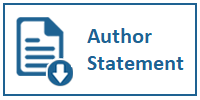Public Policy Evaluation on Limitation of The Use of Plastics Bags based on Social Marketing Perspective
DOI:
https://doi.org/10.31937/ultimacomm.v11i2.1257Abstract
The plastic bag diet campaign has been carried out by many parties including government agencies, but the campaign is feared to only reach the cognitive stage, not a meaningful change in attitude. Many campaigns on the problem of plastic waste have been carried out from NGOs, the private sector, and the government, but what is wrong so as to the problem of plastic waste continues to occur? Why does the problem of plastic waste still stop at the campaign without a comprehensive behavior implementation of the community? The research method was a survey using quota sampling and descriptive. The population people in Balikpapan, Jakarta and Surabaya. The campaign to limit plastic bags can be successful if there is a synergy of the regulators; the government and NGOs, the private sector such as retailers, and the community. The related parties are expected to design a campaign in accordance with the social marketing model. Moreover, the related parties must also conduct formative research of the target behavior: the community about plastic waste and the extent to which the related parties must endeavor so that it can be known what audience benefits are most appropriate in formulating a campaign. In the implementation of social marketing, related parties have to clearly formulate the target behavior that exists so that people are not confused and have one voice. In addition, policies must also be upheld to support and maintain the results of social marketing to be sustainable. Moreover, educational and outreach programs that can change behavior about the environment will also help future generations to reduce pollution of plastic waste.
Downloads
Downloads
Published
How to Cite
Issue
Section
License
Ultimacomm Jurnal Ilmu Komunikasi allows readers to read, download, copy, distribute, print, search, or link to its articles' full texts and allows readers to use them for any other lawful purpose. The journal allows the author(s) to hold the copyright without restrictions. Finally, the journal allows the author(s) to retain publishing rights without restrictions
1. Authors are allowed to archive their submitted article in an open access repository
2. Authors are allowed to archive the final published article in an open access repository with an acknowledgment of its initial publication in this journal















